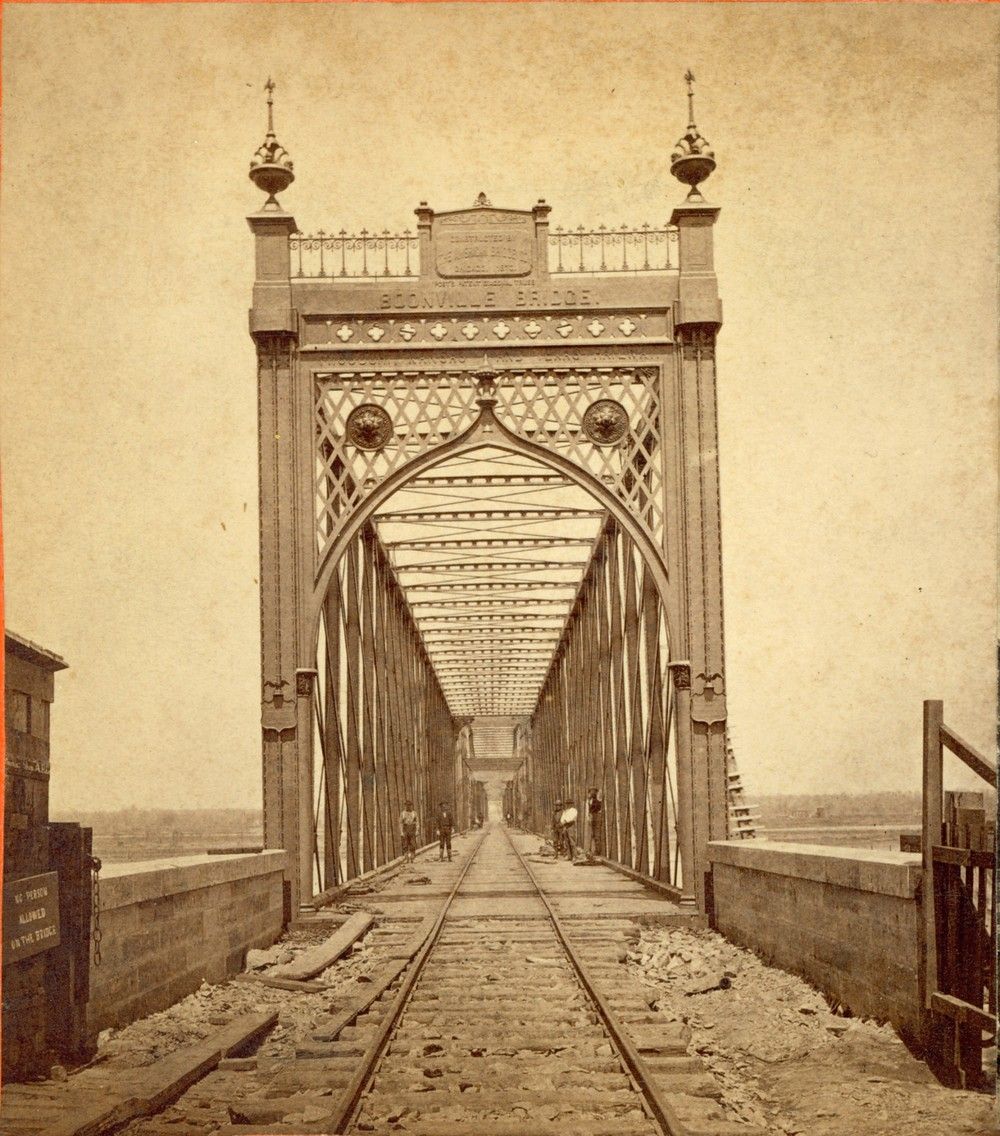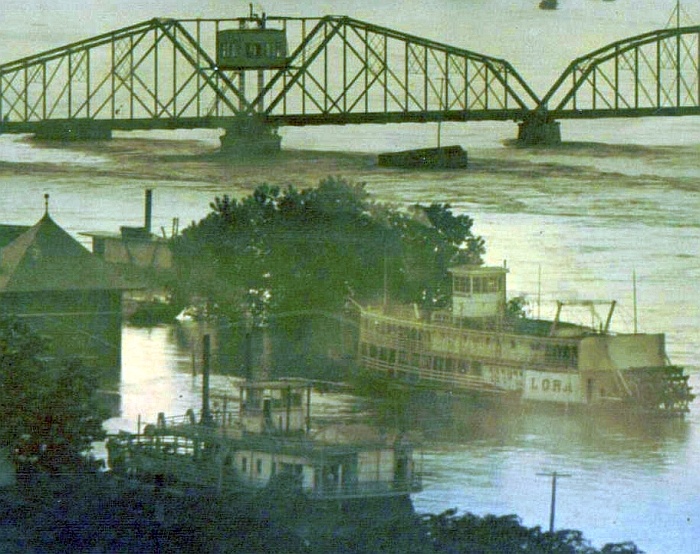View an article regarding the construction of this bridge.
The massive lift bridge at Boonville, Missouri once had an uncertain future.
However, thanks to the dedicated efforts of volunteers and politicians, the bridge will remain in place for years to come.
In 1992, the bridge was abandoned by Union Pacific. In 2004, Union Pacific developed a plan to demolish this bridge. By 2005, Union Pacific planned to build a new bridge over the Osage River using the recycled parts from this structure.
Attorney General Jay Nixon refused to let Union Pacific demolish the structure. After a fight including citizens in Cooper County, the Missouri DNR and Jay Nixon, the bridge was spared demolition.
Since then, The Katy Bridge Project has sought to advocate for rehabilitation and reuse of the massive bridge as a trail. The Katy Trail, a nationally recognized rail trail uses the rail bed on either side of this structure.
In 2016, the first segment of the Katy Bridge opened to pedestrians. Two more segments will follow, including the full operation of the lift span.

Historic photo of the first bridge
The design of the bridge is rather insignificant. A 408 foot Polygonal Warren Through Truss main span with 14 panels and riveted connections sits on towers and functions as a lift span.
To the south, a single 8-panel Polygonal Warren Through Truss span with riveted connections spans 247 feet. A modern pedestrian span crosses the Union Pacific Railroad, to replace a 60 foot girder span.
On the north, a trip of 300 foot long 10-panel riveted Polygonal Warren Through Trusses approach the main span.
All of these spans rest on concrete substructures. The lift span is currently locked in raised position, although proposals suggest that the bridge will operate again.
These truss spans feature massively built up members, heavy lacing and a sleek 1930s look. The structure has been listed on the National Register of Historic Places.
Previous bridges at this location were a Whipple Through Truss built in 1874, and a swing bridge built in 1896.
In 2016, the first section of the bridge opened for $750,000. This section included just the south approach.

Historic photo of the second bridge
The author has ranked the bridge as being regionally significant, due to the prospect of an operational rail to trail movable span over a navigable river. The author hopes this sets the status quo for other rail to trail projects to cross similar rivers.
However, the author does not believe that the lift bridge should be the only National Register listed bridge on the Katy Trail. Several smaller yet older trusses exist along the line, yet do not see the same fame as this structure.
The photo above is an overview. The photo below shows the south lift tower. The author intends to acquire new photographs soon; including detailed listings of the north end.
| Upstream | Glasgow Rail Bridge |
| Downstream | Old Wabash Bridge |
These Pictures Start at varying points in the Series
